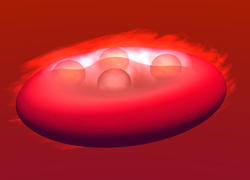Activating oxygen for better health
The observation of complex natural phenomena today needs to be tackled from a broader and more interdisciplinary perspective, as the boundaries that once kept biology, chemistry and physical domains neatly in their own place start to disintegrate. That given, biological activation of the molecule oxygen appears as a fascinating and intricate process which accompanied the evolution of our planet and prompted the growth and selection of a host of organisms. Complex molecules, playing an active role in key metabolic paths of oxygen metabolism, many times have copper and/or iron metal ions as operational engines or reactive centres. This is where binding, transport, reduction and oxidation of oxygen in its molecular form (O2) take place. The 'Oxygen activation in ribonucleotide reductase and multicopper oxidases proteins' (Activoxy) project intended to use a range of spectroscopic methods and structural and kinetic analyses to investigate the redox mechanism and the oxygen activation process connected energetic in diiron (ribonucleotide reductase, RNR, Class I R2) and copper protein (multicopper oxidases). The aim was to enhance knowledge of the functional factors regulating redox chemistry and thus to better understand how metal-oxygen interactions contribute to defining O2 reactivity. Providing molecular-level insight into oxygen and metal metabolism may help to develop better approaches in research on disease states, bioremediation and the development of efficient inhibitor drugs. The EU-funded research team explored two main classes of proteins and their interaction with molecular oxygen as well as synthetic functional biomimics. The oxygen activation path was dissected in various iron proteins involved in processes including DNA synthesis and repair (the medical domain of genomic integrity) or linked to the transfer of electrons. Other work has advanced knowledge regarding the RNR protein which is over-expressed from Epstein–Barr virus (EBV). It was discovered that viral RNR's R2 subunit is responsible for activities leading to viral transfection. The results of Activoxy have important implications for the development of drugs aimed at inhibiting RNR activity, for the treatment of conditions such as herpes viral infections.







